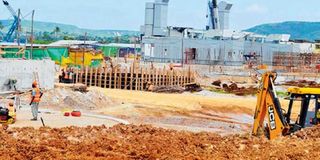Dry gas consumption forecast to rise by 30pc in 2017

What you need to know:
- London-based Business Monitor International (BMI) Research, which provides macroeconomic, industry and financial market analysis in 24 industries and 200 global markets, says Tanzania has per capita gas consumption of 15.9 cubic metres while the reserve is 1.6 trillion cubic metres.
Dar es Salaam. Tanzania’s dry gas consumption is forecast to increase to 1.7 billion cubic metres this year from 1.3 billion cubic metres last year.
London-based Business Monitor International (BMI) Research, which provides macroeconomic, industry and financial market analysis in 24 industries and 200 global markets, says Tanzania has per capita gas consumption of 15.9 cubic metres while the reserve is 1.6 trillion cubic metres.
Its analysts David Earnshaw, Laura Hyde and Jeffrey Lamoureux said in their new East African regional economic outlook for December 2017 that dry natural gas would continue to grow by two billion cubic metres annually until 2019.
Gas consumption increased significantly in 2015, as gas from the Mnazi Bay Concession was brought on stream. According to a statement by the Tanzania Petroleum Development Corporation last December, gas-fired generation increased by 280MW.
Tanzania’s oil and gas 10 years outlook report 2016 by The BMI report showed that major gas discoveries offered significant upside to the country’s gas production outlook while delays to final investment decision on the LNG export terminal may push back first production outside the 10-year forecast period.
“We forecast incremental gas production growth across the next seven years, driven by a number of marginal field developments. We see output rising to 2.7bcm [billion cubic metres] by 2021 from an estimated 1.5 bcm in 2015.”
The massive volume of Tanzania gas production is expected to happen by 2022 to reach 10.7 bcm from 2.7 bcm.
In 2023, production is projected to increase further to 17.1 billion cubic metres.




